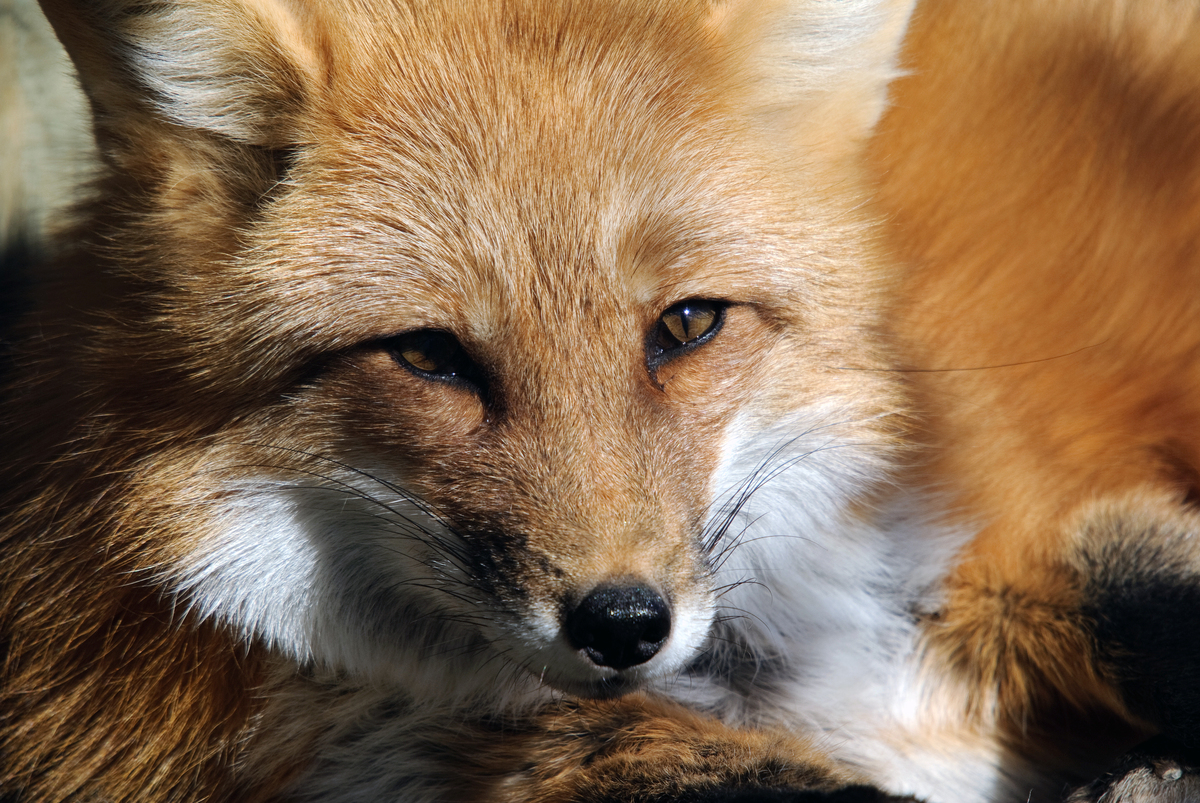

Fox protection: One Voice campaigning to rehabilitate the status of an animal so odiously hunted
On November 8th, at 3 pm in the boulevard St-Germain, the Parisians will be able to see a couple of foxes (a man and a woman body-painted) come to deliver to the Ministry of the Ecological and Solidary Transition the elements of a document designed as a safeguard. A document prepared by One Voice in an emergency …
This is a new campaign carried by the association One Voice and which aims to rehabilitate the fox in part of their campaigns. Because the animal is essential to the balance of ecosystems, because it is not harmful, but sensitive, One Voice wishes that it is urgently removed from the list of “species likely to cause damage” and ultimately, be protected by the law.
A large scale and a continuous massacre
According to official figures, it is estimated that at least 430,000 foxes are killed each year in France. In addition to the registered killings, there are also the unregistered shootings, some 70,000 individuals trapped and those killed in various other ways (hunting with dogs, underground hunting, accidents, etc.). One Voice denounces a carnage that never ceases because the red fox, according to the law, is on the list 2 of “species likely to cause damage” in 91 departments. This terminology, adopted in 2016 by the Environmental Code, refers to animals previously labelled as “pests”. It amounts to authorizing its extermination all year round and by the various means mentioned. According to the National Office of Hunting and Wildlife (ONCFS), the fox is the most mammal destroyed on our territory “with an average levy approaching 0.5 individuals / km2”.
Muriel Arnal, president of One Voice, denounces the undeniable disinformation that these animals are victims of:
“The fox is at the expense of a bad image, knowingly maintained by the hunting lobbies, who wish that the fox is a year-round target and to
eliminate it by any means, this natural predator of small game. No, foxes are not in surplus because they adapt their populations to the resources available.
Muriel Arnal is also indignant of this ecological nonsense: “While hunters are killing the foxes in huge numbers and just for fun, the farmers must resort to using dangerous chemicals, such as Bromadiolone, a very toxic anticoagulant, to protect their crops from the cyclic proliferation of voles … when usually it’s the foxes who keep the vole population in check !”
The One Voice campaign which is on the theme of protecting foxes is based on a very recent survey. The report, is a sentience sheet detailing the social aspects, the intelligence of these mammals, along with a public leaflet and an online petition on its website (www.one-voice.fr). The day of action is on the 8th November, it aims to remind the authorities that the fox is not a threat but an ecological ally, by the predation of rodents, eating the bodies of other animals, helping to reduce the damage done by voles on crops and to limit the number of animals carrying ticks and
the risk of Lyme disease .
One Voice also recalls, besides its ecological role, how the fox is an endearing animal, endowed with extraordinary capacities of adaptation, its learning and memory, developing a social organization and elaborate modes of communication, with signs of intelligent life, but too often ignored.
Alveolar echinococcosis: a health risk nonsense
Today, while rabies has been officially eradicated, hunters brandish the spectre of the Prefects of yet another zoonosis that of Alveolar Echinococcosis. However, several studies show that the impact of this disease, reduced in humans, is reinforced by the fox’s slaughter
while other methods are recommended by the health authorities.
Caused by the tapeworms of the genus Echinococcus, this zoonosis can be carried by several animals, including the fox, which prey on voles. A
four-year study from Nancy showed that a protocol of slaughter was not effective in reducing the fox population and that this measure even caused “an increase in the prevalence of E. multilocular, from 40% to 55%. %, while remaining stable in a neighbouring control zone (585 Km2). In conclusion: “We therefore recommend that managers consider alternative methods such as anthelmintic bait, which has proven effective elsewhere, to fight against Alveolar Echinococcosis“. Thus, the use of pest control as a preventive measure or treatment would have been a much better benefit. A view supported by the World Health Organization: “Regular deworming of domestic carnivores that come in contact with wild rodents should help reduce the risk of infection in humans. (…) The killing of foxes and stray dogs seems very inefficient. The sustainability and cost effectiveness of such campaigns are controversial”.
Trapping, cruel and uncontrolled techniques
The official traps authorized for the capture of ex-pests can fall into five different categories. Concerning foxes, the most common are clamping traps, wire traps and spring traps. The law states that traps must be regularly visited to prevent the trapped animal from experiencing a long and cruel agony before dying. How many traps respect these instructions which no one controls the application of ?